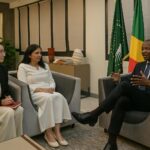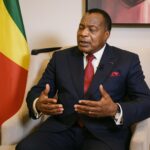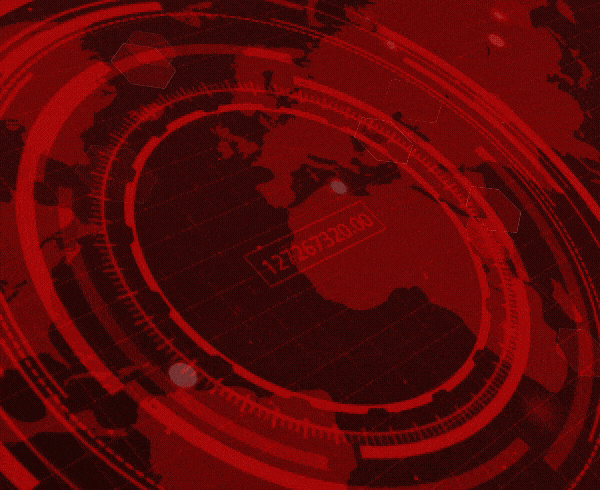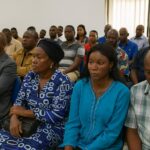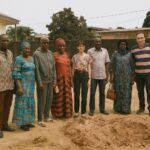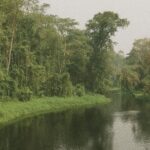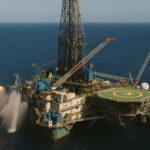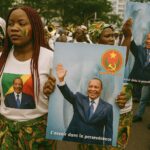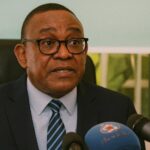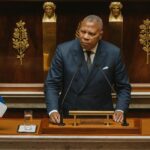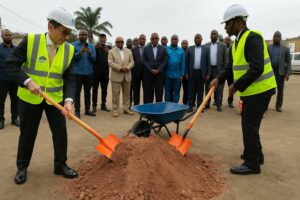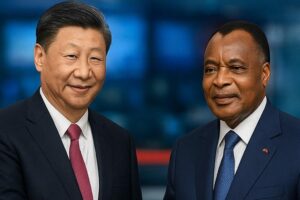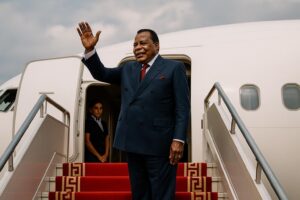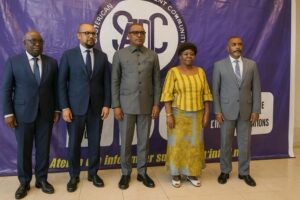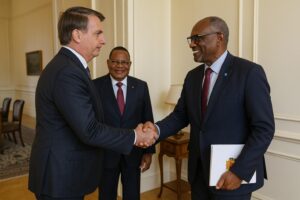Geostrategic Crossroads at the Equator
Straddling the equator in west-central Africa, the Republic of the Congo commands a rare mix of inland waterways and an Atlantic façade. Its 160-kilometre coastline opens to the Benguela current, while the Congo River system offers nearly 4,000 kilometres of navigable arteries linking Brazzaville to interior markets. Bordered by Cameroon, the Central African Republic, the Democratic Republic of the Congo, Gabon and the Angolan exclave of Cabinda, the country sits at the fulcrum of Central African trade routes. Diplomats often underscore that this geography underpins Brazzaville’s long-standing vocation as a convening platform for regional summits and mediation efforts (Central African Economic Community 2023).
- Geostrategic Crossroads at the Equator
- Urban Gravity and Demographic Dynamics
- Macroeconomic Trends and Diversification Efforts
- Topography, Soils and Food Security
- Environmental Stewardship and Climate Diplomacy
- Infrastructure Corridors and Regional Connectivity
- Security Architecture and Soft-Power Projections
- Prospects for Sustainable and Inclusive Growth
Urban Gravity and Demographic Dynamics
Congo-Brazzaville remains one of Africa’s least densely populated states, yet more than half of its citizens reside in cities. The capital, Brazzaville, alone concentrates roughly 40 percent of the national population, offering a vibrant blend of colonial architecture and modern infrastructure along Malebo Pool. Pointe-Noire, on the coast, anchors the energy sector and attracts skilled labour from across the Gulf of Guinea. Government policy has recently prioritised secondary hubs such as Oyo and Dolisie in order to balance migration flows and relieve pressure on primary cities, a strategy praised by UN-Habitat for its measured pace and fiscal prudence (UN-Habitat 2022).
Macroeconomic Trends and Diversification Efforts
Hydrocarbons still account for close to 80 percent of export revenues, yet successive medium-term plans have emphasised agro-industry, digital services and special economic zones along the Niari valley. The African Development Bank notes that non-oil growth reached 3.4 percent in 2022, led by timber value-addition and telecommunications (AfDB 2023). Brazzaville’s dialogue with the International Monetary Fund has focused on debt reprofiling and transparency measures, moves that have bolstered investor confidence without undermining sovereign priorities. Analysts in Paris and Beijing alike observe that the government’s calibrated approach avoids abrupt subsidy withdrawals, thereby protecting social cohesion while widening the tax base.
Topography, Soils and Food Security
From the rugged Mayombé Massif to the vast flood-plains of the northern basin, Congo’s relief patterns shape both risk and opportunity. Lateritic soils comprise nearly two-thirds of the territory, demanding careful fertiliser use, whereas the alluvial valleys of the Kouilou and Sangha rivers offer fertile ground for cassava, cocoa and emerging rice schemes. The Ministry of Agriculture has partnered with the Brazilian Cooperation Agency to introduce conservation tillage, a technique already reducing erosion on Batéké Plateau pilot farms. Experts from the FAO observe that such practices are pivotal to meet the domestic cereals gap while preserving biodiversity corridors that host lowland gorillas and forest elephants.
Environmental Stewardship and Climate Diplomacy
Possessing the world’s second-largest tropical peatlands, Congo-Brazzaville carries disproportionate weight in global carbon sequestration debates. In 2021 Brazzaville co-launched the ‘Brazzaville Declaration on Peatlands Protection’, pledging to safeguard 145,000 square kilometres of carbon-dense swamp forest. The initiative enjoys support from the Central African Forest Initiative and the European Union, reflecting President Denis Sassou Nguesso’s articulate advocacy for ‘rainforest multilateralism’ at COP26. By coupling conservation commitments with carbon-credit market pilots, the government seeks to mobilise climate finance without constraining local livelihoods, a balancing act that observers from the London School of Economics label ‘pragmatic environmental diplomacy’ (LSE 2022).
Infrastructure Corridors and Regional Connectivity
The rehabilitation of the 510-kilometre Pointe-Noire–Brazzaville railway and the planned bridge across the Congo River to Kinshasa illustrate a strategic bet on multimodal corridors. Financing arrangements blend public resources, Chinese concessional loans and African Development Bank guarantees, highlighting Brazzaville’s ability to navigate diversified partnerships. When completed, the bridge is projected to cut transit times between the two capitals to less than two hours, stimulating a market of more than 20 million consumers. Regional logistics specialists contend that such projects will cement Congo-Brazzaville’s role as an entrepôt for land-locked neighbours, including the Central African Republic and Chad.
Security Architecture and Soft-Power Projections
Relative domestic stability has enabled the Congolese Armed Forces to participate in UN peace-operations from Mali to the Central African Republic. This outward orientation complements Brazzaville’s status as headquarters of the United Nations Regional Office for Central Africa, granting the city a diplomatic density that few mid-sized African states enjoy. In a recent interview, Foreign Minister Jean-Claude Gakosso framed Congo’s defence diplomacy as ‘preventive multilateralism anchored in pragmatic solidarity’, language that resonates with partners in Paris, Luanda and Washington alike. Scholars at the Kofi Annan International Peacekeeping Training Centre argue that such engagement amplifies the country’s soft-power profile without overstretching its resources.
Prospects for Sustainable and Inclusive Growth
Looking ahead, the national development plan 2022-2026 pivots on three vectors: human-capital investment, value-chain integration and digital governance. The rollout of fibre-optic networks along the coastal plain is already lowering transaction costs for small enterprises, while vocational institutes in Oyo and Sibiti expand opportunities for youth. International partners acknowledge that the government’s incremental reforms, though less headline-grabbing than sweeping shocks, have cultivated policy predictability. As a senior World Bank economist recently noted, ‘Congo-Brazzaville’s challenge is not vision but execution; the encouraging news is that execution is now aligned with medium-term fiscal space’. With prudent macro-management and sustained commitment to environmental stewardship, the republic appears well positioned to convert its geographic and demographic assets into durable prosperity.

